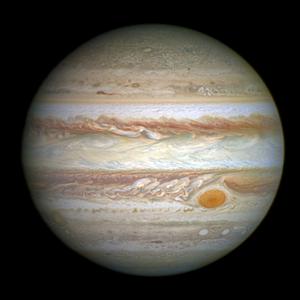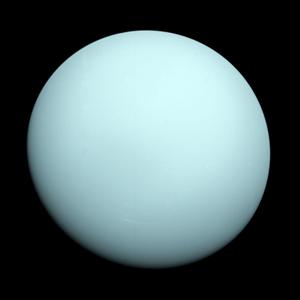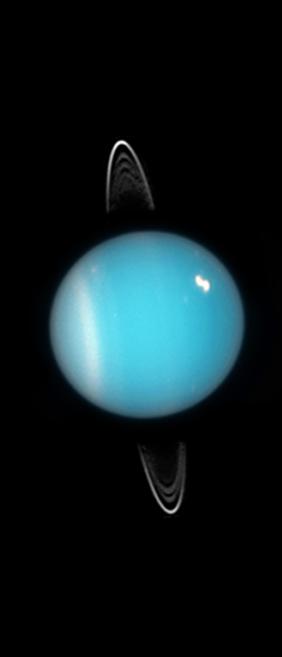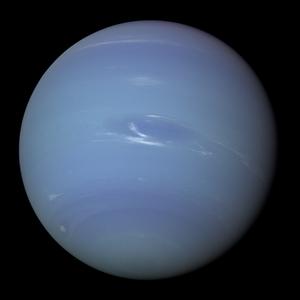Glossarbegriffe: Riesenplanet
Description: Ein Riesenplanet ist ein großer Planet, der hauptsächlich aus Wasserstoff, Helium oder komplexeren Molekülen wie Wasser, Methan oder Ammoniak besteht. Während ein Gesteinsplanet hauptsächlich aus Material mit einem sehr hohen Siedepunkt wie Eisen oder Gestein besteht, geht man davon aus, dass Riesenplaneten einen festen Kern haben, der von anderem Material umgeben ist. Die Masse eines Riesenplaneten ist wesentlich größer als die der Erde, sodass seine Schwerkraft stark genug ist, um die ausgedehnte gasförmige Atmosphäre aus leichten Elementen wie Wasserstoff und Helium zu halten.
Riesenplaneten lassen sich in zwei Kategorien einteilen: Gasriesen, die hauptsächlich aus Wasserstoff und Helium bestehen, sowie Eisriesen, die hauptsächlich aus Wasser, Methan und Ammoniak bestehen und eine Atmosphäre aus Wasserstoff und Helium haben. In beiden Fällen können die Bezeichnungen verwirrend sein, da das meiste Material in Gasriesen nicht in gasförmigem Zustand ist und Eisriesen kein festes Eis enthalten, sondern Materie, die im kalten äußeren Sonnensystem im gefrorenen Zustand war, bevor sie von den Eisriesen angesammelt wurde.
Die vier größten Planeten im Sonnensystem (Jupiter, Saturn, Neptun und Uranus) sind alle Riesenplaneten.
Zugehörige Glossarbegriffe:
See this term in other languages
Term and definition status: The original definition of this term in English have been approved by a research astronomer and a teacher The translation of this term and its definition is still awaiting approval
The OAE Multilingual Glossary is a project of the IAU Office of Astronomy for Education (OAE) in collaboration with the IAU Office of Astronomy Outreach (OAO). The terms and definitions were chosen, written and reviewed by a collective effort from the OAE, the OAE Centers and Nodes, the OAE National Astronomy Education Coordinators (NAECs) and other volunteers. You can find a full list of credits here. All glossary terms and their definitions are released under a Creative Commons CC BY-4.0 license and should be credited to "IAU OAE".
If you notice a factual or translation error in this glossary term or definition then please get in touch.
Zugehörige Medien
Jupiter
Bildnachweis: NASA, ESA, and A. Simon (Goddard Space Flight Center) credit link
License: CC-BY-4.0 Creative Commons Namensnennung 4.0 International (CC BY 4.0) icons
Saturn
Bildnachweis: NASA, ESA, A. Simon (Goddard Space Flight Center), and M.H. Wong (University of California, Berkeley) credit link
License: CC-BY-4.0 Creative Commons Namensnennung 4.0 International (CC BY 4.0) icons
Uranus in natural colours
Bildnachweis: NASA/JPL-Caltech credit link
License: PD Public Domain icons
Uranus with rings
Bildnachweis: NASA, ESA, and M. Showalter (SETI Institute) credit link
License: PD Public Domain icons
Neptune
Bildnachweis: NASA / JPL / Voyager-ISS / Justin Cowart credit link
License: PD Public Domain icons













